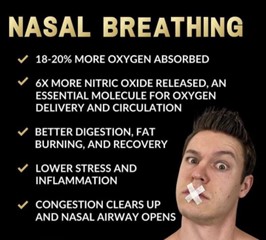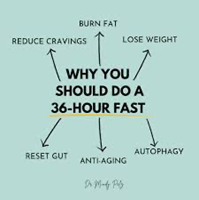 I absolutely love the many conversations that we get to have in the office every day. The topics range all over the health and wellness spectrum and often beyond that. One of the most frequent topics of conversation revolves around how to lose belly fat. We are all familiar with the soft layer of adipose tissue that loves to hang around our mid section and that is so resistant to change. Many people that have been successful in losing weight still struggle to get rid of belly fat. Why is this? Why does diet and exercise fail in ridding the body of belly fat?
I absolutely love the many conversations that we get to have in the office every day. The topics range all over the health and wellness spectrum and often beyond that. One of the most frequent topics of conversation revolves around how to lose belly fat. We are all familiar with the soft layer of adipose tissue that loves to hang around our mid section and that is so resistant to change. Many people that have been successful in losing weight still struggle to get rid of belly fat. Why is this? Why does diet and exercise fail in ridding the body of belly fat?
All Fat Is Not The Same:
Fat is deposited in many different places around the body and all of this body fat is not the same. In fact, you can understand what is going on with the hormones of the body by studying where your body fat is being stored. Belly fat is highly related to the hormone cortisol. If you find that your belly is growing, it may not be strictly related to diet or exercise but it may be caused by stress.
Cortisol
Cortisol is the number one hormone for storing body fat around the belly and can cause several other changes to the body:
- Increased Fat Storage: Cortisol can promote fat storage, especially visceral fat around the abdomen. This type of fat is more metabolically sensitive and linked to various health issues like insulin resistance, heart disease, and metabolic syndrome.
- Appetite and Cravings: Elevated cortisol levels can influence appetite and cravings, leading to overeating or choosing unhealthy, calorie-dense foods, which can contribute to belly fat accumulation.
- Metabolism: Prolonged high levels of cortisol can slow down metabolism, making it harder to burn calories efficiently. This can contribute to weight gain, including around the abdomen.
- Distribution of Fat: Cortisol can affect where fat is deposited in the body. Chronic stress and elevated cortisol levels are associated with increased abdominal fat deposition compared to other areas of the body.
- Muscle Loss: Excessive cortisol can also lead to muscle loss, which further reduces metabolic rate and makes it easier to gain fat, especially around the abdomen.
 How can we reduce cortisol and get rid of belly fat?
How can we reduce cortisol and get rid of belly fat?
- Exercise: Cortisol is produced by the body with a peak production about 2 hours after we wake up. This is the ideal time for a workout. If you do not use this released cortisol then your body will need to store the cortisol inside of belly fat. Likewise, cortisol is produced in high amounts after a stressful event. Think of a stressful meeting at work that has just concluded. The worst thing for your belly fat would be to go back to your desk and sit for another two hours. Try going for a short walk to de-stress and to use that excess cortisol.
*Engage in regular physical activity, such as aerobic exercise, strength training, yoga, or tai chi. For an effective and quick workout in the morning, check out our article The Daily Workout.
- Avoid Sugar: We all know that we should eat a balanced diet rich in whole foods, including fruits, vegetables, lean proteins, and healthy fats. But, avoiding sugar and high carbohydrate meals and snacks may be the key to reducing belly fat. These foods spike your insulin resulting in elevated cortisol levels and an increase in belly fat.
- Adequate Sleep: Aim for 7-9 hours of quality sleep each night. Establish a consistent sleep schedule, create a relaxing bedtime routine, and optimize your sleep environment for restful sleep.
- Stress Management Techniques: Practice stress-reduction techniques such as slow, deep breathing exercises, progressive muscle relaxation, journaling, or spending time in nature. These techniques can help lower stress hormones like cortisol.
 In particular, I want to highlight nasal breathing. Nasal breathing stimulates the parasympathetic nervous system, which is responsible for the “rest and digest” response. This can counterbalance the effects of the sympathetic nervous system (responsible for the “fight or flight” response), leading to reduced cortisol production and overall stress levels. Practicing nasal breathing techniques is a beneficial way to promote relaxation and reduce your cortisol production. Nasal breathing techniques are best performed when you sit or stand in a comfortable position with your spine straight but not rigid. Relax your shoulders and jaw. Close your mouth gently and bring your attention to your nostrils. Inhale slowly and deeply through your nose, allowing your abdomen to expand as you fill your lungs with air.
In particular, I want to highlight nasal breathing. Nasal breathing stimulates the parasympathetic nervous system, which is responsible for the “rest and digest” response. This can counterbalance the effects of the sympathetic nervous system (responsible for the “fight or flight” response), leading to reduced cortisol production and overall stress levels. Practicing nasal breathing techniques is a beneficial way to promote relaxation and reduce your cortisol production. Nasal breathing techniques are best performed when you sit or stand in a comfortable position with your spine straight but not rigid. Relax your shoulders and jaw. Close your mouth gently and bring your attention to your nostrils. Inhale slowly and deeply through your nose, allowing your abdomen to expand as you fill your lungs with air.
Focus on breathing into your diaphragm rather than shallow chest breathing. Feel your abdomen rise and fall with each breath, indicating that you are engaging your diaphragm. Breathe in and out through your nose with a rhythmic 5 second inhalation and a 5 second exhalation. Practice this for 5 minutes once or twice every day. In times of stress, try this breathing technique to slow your heart rate and to calm your nerves. Be patient as it may take time to fully integrate nasal breathing into your daily habits, especially if you’re accustomed to mouth breathing. Be patient with yourself and practice consistently to experience the benefits over time. Remember that nasal breathing should feel natural and relaxed.
 36 Hour Fasting: One of the best research studies on fasting showed a specific pattern of fasting reduced belly fat more than several others. In this study participants fasted for 36 hours straight followed by 12 hours of eating. The participants in this study did this pattern for 30 straight days and the results were impressive. I do not feel that you need to follow this aggressive approach to achieve good results. I have seen many patients try a 36 hour fast once every week or two and achieve results that they were very excited about.
36 Hour Fasting: One of the best research studies on fasting showed a specific pattern of fasting reduced belly fat more than several others. In this study participants fasted for 36 hours straight followed by 12 hours of eating. The participants in this study did this pattern for 30 straight days and the results were impressive. I do not feel that you need to follow this aggressive approach to achieve good results. I have seen many patients try a 36 hour fast once every week or two and achieve results that they were very excited about.
- Social Support: Maintain strong social connections with friends, family, or support groups. Having a strong support network can help reduce stress and promote emotional well-being. If the Covid pandemic era taught us one thing, it was that we need to be around others. We need to be around people for our emotional and physical well-being.
- Limit Stimulants: Minimize consumption of stimulants like caffeine and alcohol, especially in the evening. These substances can interfere with sleep and contribute to elevated cortisol levels. Overconsumption of these can put us into a cortisol resistant like state creating chronic fatigue and rapid weight gain.
- Time Management: Prioritize tasks, set realistic goals, and learn to delegate or say no when necessary. Effective time management can reduce feelings of being overwhelmed and chronic stress. You may find that front loading your day with the most stressful activities to be best. This will allow the end of the day to be filled with activities that not only reduce your stress but help to restore your body.
 Cold Plunges: Cold plunges are becoming more of a lifestyle activity like exercise and healthy eating because of the great results people are experiencing. Cold plunges particularly work well to reduce body fat as it helps to change white fat into brown fat. White fat is the dangerous fat that is often found in the belly around our organs. It is difficult to burn and resistant to becoming more metabolically active. Cold plunges help white fat become more metabolically active changing it into brown fat. For more on how cold plunges can improve your health and how best to do them, check out our article The Health Benefits of Cold Plunges.
Cold Plunges: Cold plunges are becoming more of a lifestyle activity like exercise and healthy eating because of the great results people are experiencing. Cold plunges particularly work well to reduce body fat as it helps to change white fat into brown fat. White fat is the dangerous fat that is often found in the belly around our organs. It is difficult to burn and resistant to becoming more metabolically active. Cold plunges help white fat become more metabolically active changing it into brown fat. For more on how cold plunges can improve your health and how best to do them, check out our article The Health Benefits of Cold Plunges.
By implementing these strategies consistently, you can effectively reduce high cortisol levels and improve your overall health and well-being. When done consistently, these metabolic changes will mobilize body fat deposited around the belly. Like most things in life, decreasing belly fat is a multifactorial strategy that may require several adaptations along the way. We want you to know that it is our promise to be here for you, guide you, and to help you become healthier than you have ever been.







